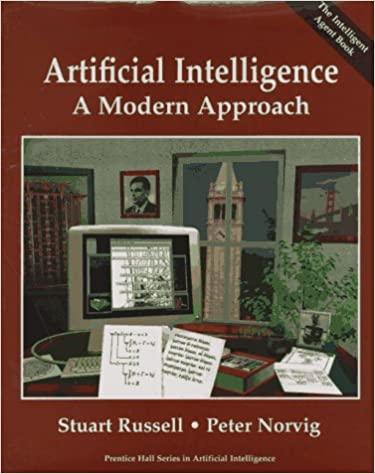2.5 Implement a performance-measuring environment simulator for the vacuum-cleaner world. This world can be described as follows:
Question:
2.5 Implement a performance-measuring environment simulator for the vacuum-cleaner world.
This world can be described as follows:
<) Percepts: Each vacuum-cleaner agent gets a three-element percept vector on each turn.
The first element, a touch sensor, should be a 1 if the machine has bumped into something and a 0 otherwise. The second comes from a photosensor under the machine, which emits a 1 if there is dirt there and a 0 otherwise. The third comes from an infrared sensor, which emits a 1 when the agent is in its home location, and a 0 otherwise.
0 Actions: There are five actions available: go forward, turn right by 90°, turn left by 90°, suck up dirt, and turn off.
<) Goals: The goal for each agent is to clean up and go home. To be precise, the performance measure will be 100 points for each piece of dirt vacuumed up, minus 1 point for each action taken, and minus 1000 points if it is not in the home location when it turns itself off.
<) Environment: The environment consists of a grid of squares. Some squares contain obstacles (walls and furniture) and other squares are open space. Some of the open squares contain dirt. Each "go forward" action moves one square unless there is an obstacle in that square, in which case the agent stays where it is, but the touch sensor goes on. A "suck up dirt" action always cleans up the dirt. A "turn off" command ends the simulation.
We can vary the complexity of the environment along three dimensions:
0 Furniture: Placing furniture in the room makes it more complex than an empty room. To the vacuum-cleaning agent, a piece of furniture cannot be distinguished from a wall by perception; both appear as a 1 on the touch sensor. 0 Dirt placement: In the simplest case, dirt is distributed uniformly around the room. But it is more realistic for the dirt to predominate in certain locations, such as along a heavily travelled path to the next room, or in front of the couch.
Step by Step Answer:

Artificial Intelligence A Modern Approach
ISBN: 9780131038059
1st Edition
Authors: Stuart Russell, Peter Norvig






